Protecting the satellites that support our daily lives, from space debris and to achieve an overall sustainable society for us
Satellites that support our daily lives are under constant threat from space debris. All of our Space Tracking and Communications Center staff members are working hard to achieve a sustainable society by making the space around the Earth safer. Our “Project to protect satellites from space debris” is all about this. One of the most important things we have is the “RABBIT”: The Risk Avoidance Assist Tool based on Debris Collision Probability.
Space Debris Problems
Here on the Earth, garbage problem occurs all over the world. In space however, the threat of space debris continues to increase every year. 90% of objects in space orbiting the Earth are debris. The satellites that enrich our lives and keep us safe are only about 10%.
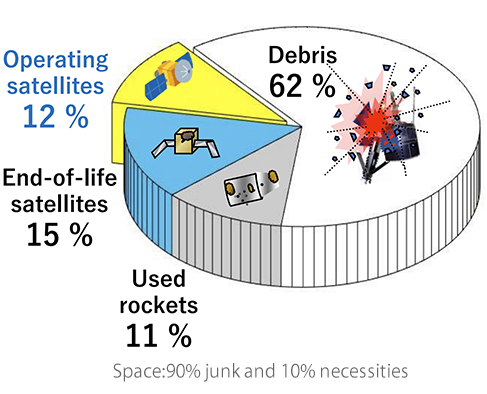
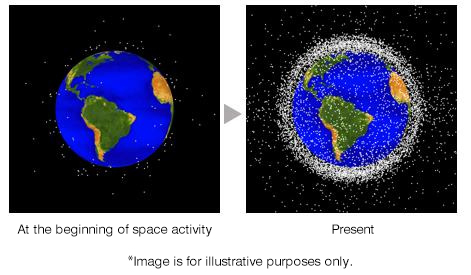
Even tiny space debris objects have the potential to be highly destructive due to their ultrahigh speed. Our satellites are under constant threat. If even a small object of only about 100g strikes on a satellite, it can cause severe damage or complete destruction of the satellite, and of course more debris and more future damage. In order to preserve our comfortable and convenient society with the use of satellites, making sure they avoid collisions in space is a top priority.
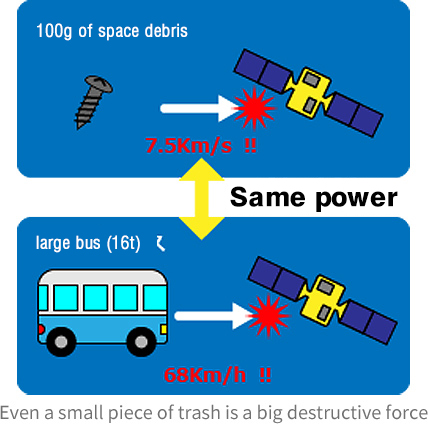
What can “RABBIT” do?
A satellite operation organization receives data about the threat of space debris from the CSpOC (Combined Space Operations Center) in the US. However, the CSpOC does not provide information about which collision countermeasure is best, so that problem is up to the particular satellite operation organization. Without an orbit specialist, it is a difficult job for any satellite operation organization/company to decide how a particular piece of space debris should be avoided. There are some satellite operation organizations/companies that cannot make these calculations by themselves. JAXA however, with their techniques and long experience learning about space debris avoidance, has built a system as a tool to implement quick, safe and appropriate space debris avoidance. JAXA has decided to provide the system to the world free of charge. This system is called “RABBIT” (Risk Avoidance Assist Tool based on Debris Collision Probability).
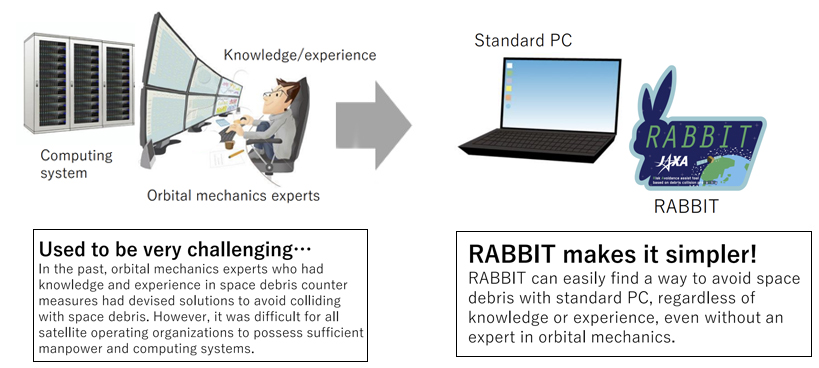
“RABBIT” analyzes collision risk for lots of threatening space debris. The data is displayed in simple red (danger) and blue (safe) contour lines. With this, anyone in a satellite control organization can plan optimal collision avoidance measures with a visually easy to understand tool.

RABBIT’s contribution to SDGs
Satellite operation organizations can use “RABBIT” to avoid approaching space debris safely and appropriately to protect their own satellites and maintain their services. In this way the overall number of collisions in space decreases, contributing to the maintenance of a safe space environment. With “RABBIT” we are contributing to a sustainable society by making space a safer place.

The 18th Target
The 14th target for SDGs is to “Protect the Richness of the Seas”, and the 15th target is to “Protect also the Richness of the Land”. Like our forests, our seas and rivers, space is also an important natural resource. This is important work for us because we must preserve our valuable society with our assets in space, for us and the next generation to live with peace of mind. However, “space” is not identified as a natural resource in the existing 17 targets. We have to create a new 18th target “Protecting space” as a natural resource, necessary to our society.
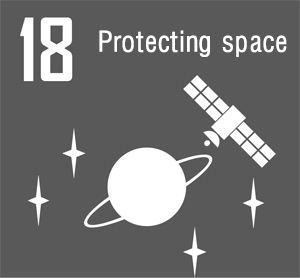
RABBIT homepage https://rabbit.jaxa.jp/index_en.html
Press Release(in Japanese) https://www.jaxa.jp/press/2021/03/20210322-1_j.html
Brochure of RABBIT https://rabbit.jaxa.jp/files/PAMPHLET_RABBIT.pdf


